Altitude Sickness on Annapurna Base Camp Trek: The Hidden Risk Too Many Ignore
If you are planning for Annapurna Base Camp(ABC) trek anytime soon you must know altitude sickness affects upto 10% of trekkers every year.
Quick Summary About Altitude Sickness On Annapurna Base Camp Trek
- 10% of trekkers suffer from altitude sickness on the ABC trek — and many don’t even see it coming.
- Being young or fit doesn’t protect you. In fact, it might trick you into pushing too fast, too soon.
- ABC isn’t extreme, but it’s deceptive. The fast gain from Deurali to Base Camp is where most problems begin.
- The only real safety net? Go slow, hydrate well, listen to your body — and know when to turn back.
When you think of the Annapurna Base Camp trek, you imagine rising peaks, prayer flags all around, and that victorious moment of standing at 4,130 meters. But here’s the twist: 10 out of every 100 trekkers who reach that altitude suffer from moderate to severe altitude sickness.
In fact, in peak seasons, an average of 20 to 30 trekkers are evacuated by helicopter from the Annapurna Base Camp(ABC) and Machapuchare Base Camp(MBC) areas alone. These numbers might surprise you, especially for a trek that isn’t categorized as extreme. But that’s exactly why it’s misunderstood.
Why Do So Many Trekkers Misunderstand Altitude Sickness?
Many trekkers, especially first-timers, mistakenly believe that being physically fit shields them from the effects of thin air. Unfortunately, altitude sickness doesn’t discriminate.
In fact, research shows that physical fitness does not reduce the risk. Furthermore, as per many of our guides, fit individuals tend to ascend too fast, pushing their bodies into danger without realizing it, which only increases risk of altitude sickness.
Meanwhile, others confuse early symptoms like headaches or nausea with simple tiredness or dehydration.
But wait there’s another common trap: overreliance on Diamox. While helpful, this medication doesn’t make you immune. It only aids in faster acclimatization and can mask the gradual onset of Acute Mountain Sickness (AMS), which can escalate to far more dangerous conditions like HAPE and HACE.
Point At Which Altitude Sickness Begins At ABC
Altitude sickness doesn’t begin when you hit extreme heights. It can start as early as 2,500 meters above Sea level.
On the ABC trek, that threshold is crossed quickly. The most common route sees trekkers ascending from Chhomrong at 2,170m all the way to ABC at 4,130m in just a few days.
The sharp elevation gain from Deurali to MBC, and then from MBC to ABC, is particularly concerning. This pattern of ascent, while logistically efficient, leaves little room for your body to adapt to oxygen scarcity.
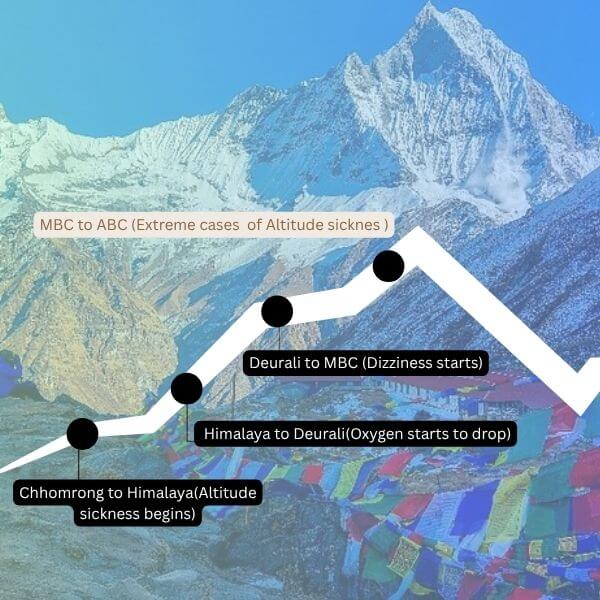
AMS, HAPE, HACE: Types of Altitude Sickness You need to know
Before diving deep into Altitude Sickness on Annapurna Base Camp Trek, we feel responsible to tell you guys a little about all the types of altitude sickness. As, we believe that one can be more aware if they are equipped with all the necessary knowledge.
First of all let us tell you, the term AMS gets thrown around often, but not everyone realizes it can progress to High-Altitude Cerebral Edema (HACE) or High-Altitude Pulmonary Edema (HAPE).
AMS typically shows up with symptoms like headache, nausea, dizziness, and loss of appetite. On the other hand, HAPE, involves fluid in the lungs, leading to severe shortness of breath, even at rest.
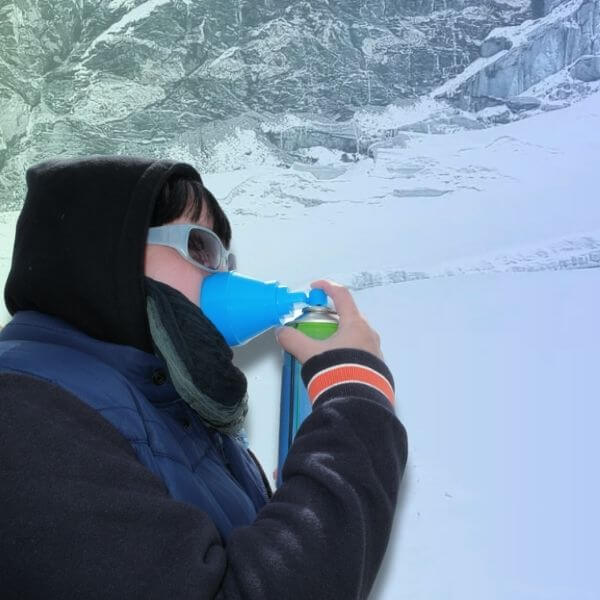
Similarly, HACE involves swelling in the brain, causing confusion, loss of coordination, and in extreme cases, coma. Both HAPE and HACE are medical emergencies that demand immediate descent.
These are not distant possibilities but very real risks encountered every season on the ABC route.
Danger Zones on the ABC Trail
Certain sections of the trail act as hot zones for symptoms to begin or worsen.
From Chhomrong to Himalaya, trekkers might already feel the first signs. Between Himalaya and Deurali, the drop in oxygen becomes noticeable. The stretch from Deurali to MBC is often when trekkers begin to feel overwhelmed, and the final push from MBC to ABC is when conditions escalate.
Sleeping at these high elevations, especially at ABC, amplifies the problem. The body’s oxygen saturation drops significantly during sleep at altitude, and that’s when symptoms intensify.
As per our experienced guides here are few symptoms that many trekkers gets in each himalaya range:
- Chhomrong to Himalaya (2,170m to 2,920m): Light headaches and poor sleep.
- Himalaya to Deurali (3,200m): Oxygen drops. Fatigue kicks in. Some trekkers feel dizzy, even nauseous.
- Deurali to MBC (3,700m): Extreme dizziness and headache, Loss of appetite and loss of sleep
- MBC to ABC (4,130m): Difficulty in breathing, diarrhea, vomiting, extreme weakness.
What Are Our Experience Says About Altitude Sickness In ABC
From our past experience we have seen that 10% of trekkers experience moderate to severe AMS on this route. Another 5% are forced to turn back.
Furthermore, despite the seeming accessibility of the trek, data shows a surprisingly high number of helicopter rescues each month. These aren’t freak occurrences; they’re patterns. As you ascend beyond 3,000 meters, up to 40% of people experience symptoms. Above 4,000 meters, the number climbs higher.
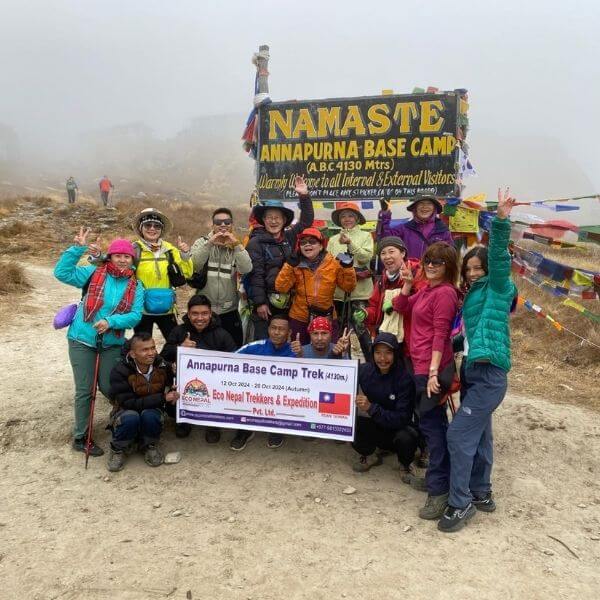
Water, Rest, and the Myths Around Youth
There are also misconceptions around hydration and sleep. Dehydration is common at high altitudes because the cold, dry air causes more fluid loss through respiration. But many trekkers don’t increase their water intake. You need at least 3-4 liters per day.
Sleep, meanwhile, becomes fragmented due to periodic breathing and oxygen drops. This lack of deep rest further weakens your body’s ability to adapt. And no, being young doesn’t help as much as people assume.
In fact, younger people tend to push themselves harder, ignoring symptoms that older, more cautious trekkers might pay attention to.
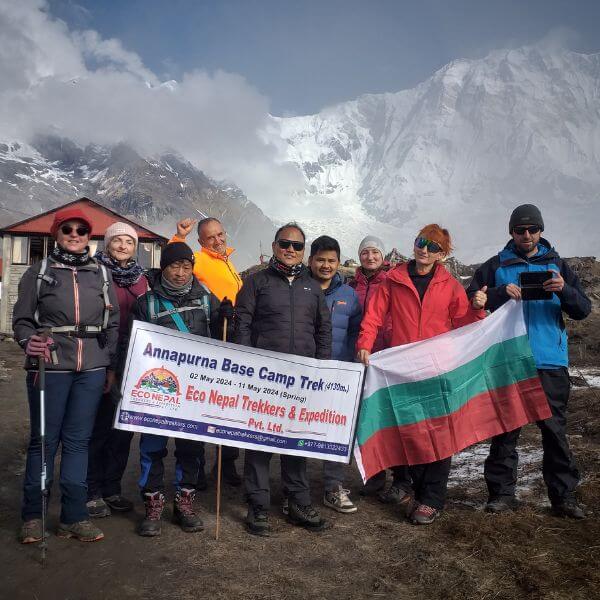
Slow is Safe: The Acclimatization Blueprint
The best acclimatization strategy is one that involves patience which ultimately reduces the risk of Altitude Sickness on Annapurna Base Camp Trek. Ideally, trekkers should stop at Chhomrong for acclimatization and take their time between Himalaya and Deurali. Spending a night at Machapuchare Base Camp is essential before ascending to ABC.
Following the “climb high, sleep low” method is also effective. Hike up to higher altitudes during the day, then descend to a lower elevation to sleep. These routines are not optional; they are your insurance to keep you safe.
When Symptoms Strike: Know the Red Flags
So what happens if you still feel sick? The golden rule is: don’t ascend if symptoms appear.
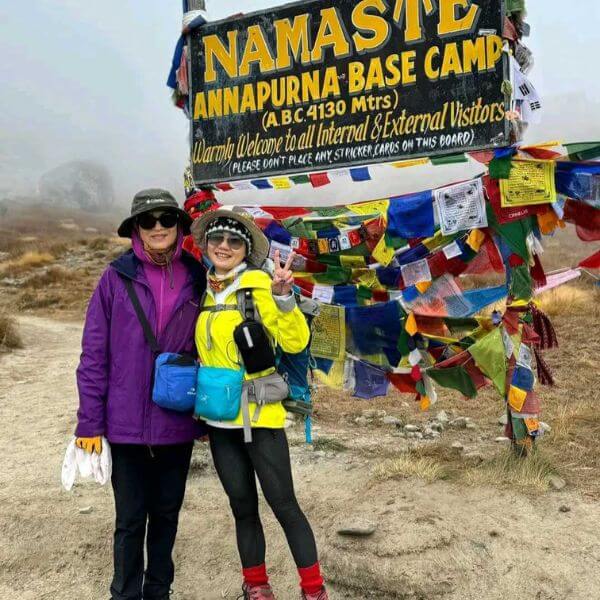
Mild headaches are one thing. But when symptoms worsen like persistent headaches, vomiting, difficulty walking straight, or mental confusion, it’s time to act. For our clients we first assess their SpO2 levels. If it drops below 80%, we believe its a serious territory and then we suggest them to descent to lower elevation.
Most of our guides always carry oximeters, and since they are trained to make tough calls, like turning back or organizing a rescue.
The Cost of a Rescue From ABC Trek
Speaking of rescues, helicopter evacuations on the ABC trail are not uncommon.
But they’re expensive. One ride can cost over $2,000, which is why comprehensive travel insurance that covers high-altitude trekking is essential. Most evacuations in our experience happens from MBC and ABC, and patients are typically flown to Pokhara or Kathmandu for further treatment.
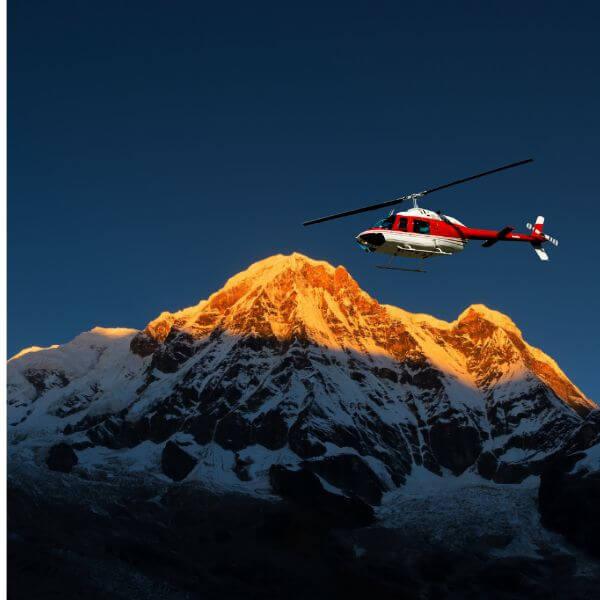
Evacuation logistics are reliable, but weather can delay flights, especially in stormy months.
Choosing the Right Season For Eliminating Altitude Sickness on the Annapurna Base Camp Trek
To be safe from AMS, you can choose stable months to trek.
In our opinion, the most stable months for trekking are October to November and March to April. These months offer clearer skies, milder temperatures, and predictable weather.
Meanwhile, winter brings hypothermia risks and further complicates acclimatization. On the other hand, pre-monsoon months bring unpredictable storms and dehydration challenges.
The Perfect Itinerary to minimize Altitude Sickness on Annapurna Base Camp Trek
We are sure after knowing all the risk you must be wondering what might be the perfect plan to ascend Annapurna Base Camp?
Well, look no further as we have also made safest itinerary that not only helps in minimizing the risk but also helps you in being more acclimatized on ABC.
You can read Annapurna Base Camp Trek – 12 Days to know in detail if you want a quick overview, then day by day plan is listed below:
- Day 01: Arrive in Kathmandu (1,350m) – Airport pickup, Thamel hotel check-in.
- Day 02: Drive or fly to Pokhara (827m) – Explore lakeside in the evening.
- Day 03: Drive to Ghandruk, trek to Chhomrong (2,170m) – First day on trail.
- Day 04: Trek to Bamboo (2,310m) – Through forests and suspension bridges.
- Day 05: Trek to Deurali (3,230m) – Higher elevation, stunning cliff views.
- Day 06: Trek to ABC (4,130m) – Reach base camp, big altitude jump.
- Day 07: Trek down to Bamboo – Long descent, passing MBC and Deurali.
- Day 08: Trek to Jhinu Danda (1,760m) – End with a hot spring dip.
- Day 09: Trek to Nayapul, drive to Pokhara – Trek complete.
- Day 10: Drive back to Kathmandu – End of journey.
What About Helicopter Tours To ABC?
If you’re considering a helicopter tour to ABC instead of trekking, know this: it doesn’t reduce your risk of AMS.
A sudden jump from Pokhara (820m) to ABC (4,130m) in under an hour gives your body zero time to adapt. Even though symptoms may not show immediately, many people experience headaches, dizziness, or nausea even during short visits.
However, operators do provide oxygen support and trained crews, which does increase certain level of safety.
Read More: Annapurna Base Camp Trek with Helicopter Return
Final Words of Caution
Altitude sickness doesn’t just happen to someone else. It can happen to you, even if you’ve hiked before, even if you think you’re ready.
The Annapurna Base Camp trek is beautiful, but beauty doesn’t make it forgiving. Respect the mountain. Understand your limits. And remember, the summit is optional. Coming back home safe is mandatory.

